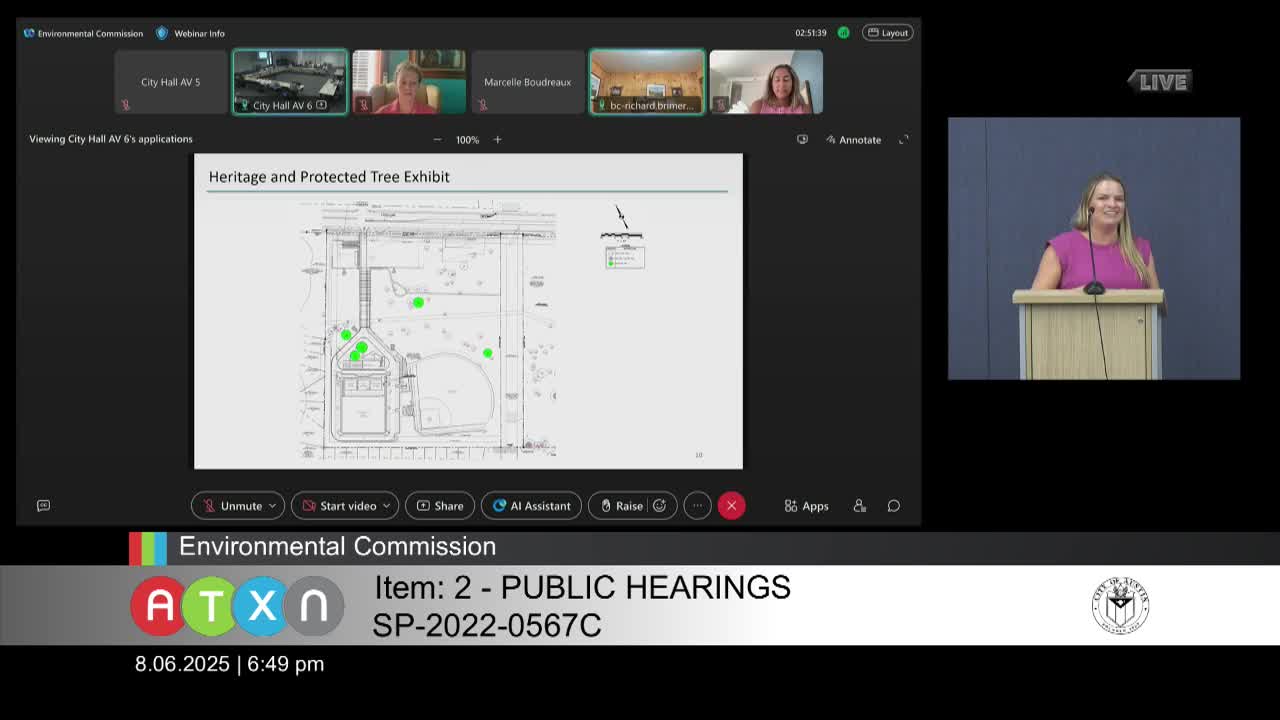Local Council Debates Natural Grass Versus Artificial Turf for New Sports Field
August 06, 2025 | Austin, Travis County, Texas
This article was created by AI summarizing key points discussed. AI makes mistakes, so for full details and context, please refer to the video of the full meeting. Please report any errors so we can fix them. Report an error »

During a recent meeting of the Austin Environmental Commission, discussions centered on the future of sports fields in the area, particularly the choice between natural grass and artificial turf. As the city moves forward with site development permits, officials emphasized the importance of making informed decisions based on best practices and environmental considerations.
One key point raised was the environmental impact of both options. Natural grass fields require significant water and chemical inputs, including pesticides and herbicides, which could affect local watersheds. The commission acknowledged the need for sensitivity to runoff and compliance with environmental codes, indicating that a formal decision on the type of field has yet to be made.
Commission members expressed the complexities involved in choosing between natural grass and artificial turf. While natural grass may provide aesthetic benefits, it poses challenges related to water usage and chemical treatments. Conversely, artificial turf is seen as potentially less toxic and easier to manage, as highlighted by past decisions made by Travis County regarding their ball fields.
Additionally, the commission discussed the implementation of dark sky lighting to minimize light pollution in nearby neighborhoods, with a proposed cutoff time for lights set at 10:00 PM. This initiative reflects a growing awareness of the need to balance community recreational needs with environmental stewardship.
As the city continues to evaluate its options for sports fields, the discussions underscore the importance of considering both ecological impacts and community preferences. The commission's ongoing deliberations will play a crucial role in shaping Austin's approach to sustainable sports facilities in the future.
One key point raised was the environmental impact of both options. Natural grass fields require significant water and chemical inputs, including pesticides and herbicides, which could affect local watersheds. The commission acknowledged the need for sensitivity to runoff and compliance with environmental codes, indicating that a formal decision on the type of field has yet to be made.
Commission members expressed the complexities involved in choosing between natural grass and artificial turf. While natural grass may provide aesthetic benefits, it poses challenges related to water usage and chemical treatments. Conversely, artificial turf is seen as potentially less toxic and easier to manage, as highlighted by past decisions made by Travis County regarding their ball fields.
Additionally, the commission discussed the implementation of dark sky lighting to minimize light pollution in nearby neighborhoods, with a proposed cutoff time for lights set at 10:00 PM. This initiative reflects a growing awareness of the need to balance community recreational needs with environmental stewardship.
As the city continues to evaluate its options for sports fields, the discussions underscore the importance of considering both ecological impacts and community preferences. The commission's ongoing deliberations will play a crucial role in shaping Austin's approach to sustainable sports facilities in the future.
View full meeting
This article is based on a recent meeting—watch the full video and explore the complete transcript for deeper insights into the discussion.
View full meeting
